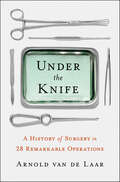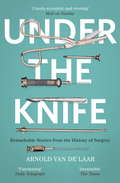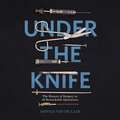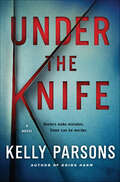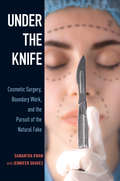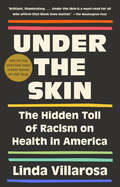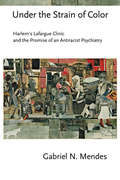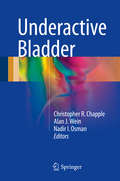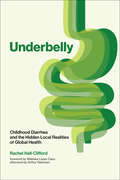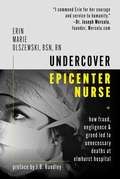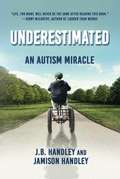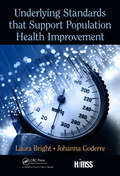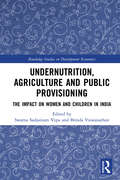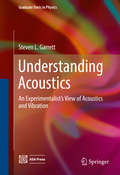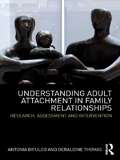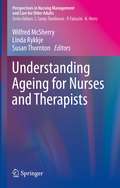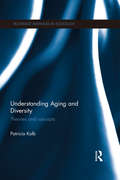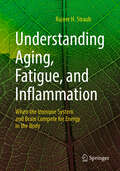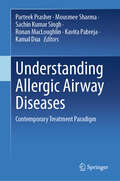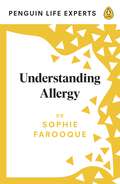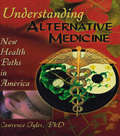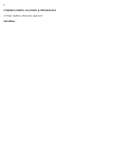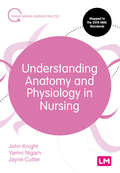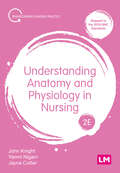- Table View
- List View
Under the Knife: A History of Surgery in 28 Remarkable Operations
by Arnold van de LaarSurgeon Arnold van de Laar uses his own experience and expertise to tell this engrossing history of surgery through 28 famous operations—from Louis XIV and Einstein to JFK and Houdini.From the story of the desperate man from seventeenth-century Amsterdam who grimly cut a stone out of his own bladder to Bob Marley's deadly toe, Under the Knife offers a wealth of fascinating and unforgettable insights into medicine and history via the operating room.What happens during an operation? How does the human body respond to being attacked by a knife, a bacterium, a cancer cell or a bullet? And, as medical advances continuously push the boundaries of what medicine can cure, what are the limits of surgery?With stories spanning the dark centuries of bloodletting and amputations without anaesthetic through today's sterile, high-tech operating rooms, Under the Knife is both a rich cultural history, and a modern anatomy class for us all.
Under the Knife: A History of Surgery in 28 Remarkable Operations
by Arnold van Laar'This is history with a surgeon's touch: deft, incisive and sometimes excruciatingly bloody' The Sunday Times'Utterly eccentric and riveting' Mail on Sunday 'Eye-opening and, frequently, eye-watering . . . a book that invites readers to peer up the bottoms of kings, into the souls of rock stars and down the ear canals of astronauts' The Daily TelegraphHow did a decision made in the operating theatre spark hundreds of conspiracy theories about JFK? How did a backstage joke prove fatal to world-famous escape artist Harry Houdini? How did Queen Victoria change the course of surgical history?Through dark centuries of bloodletting and of amputations without anaesthetic to today's sterile, high-tech operating theatres, surgeon Arnold van de Laar uses his experience and expertise to tell an incisive history of the past, present and future of surgery.From the dark centuries of bloodletting and of amputations without anaesthetic to today's sterile, high-tech operating theatres, Under the Knife is both a rich cultural history, and a modern anatomy class for us all.
Under the Knife: A History of Surgery in 28 Remarkable Operations
by Arnold van LaarThe history of surgery in 28 famous operations - from Louis XIV to JFK, and from Einstein to Houdini.In Under the Knife, surgeon Arnold Van de Laar uses his own experience and expertise to tell the witty history of the past, present and future of surgery.From the story of the desperate man from seventeenth-century Amsterdam who grimly cut a stone out of his own bladder to Bob Marley's deadly toe infection, Under the Knife offers all kinds of fascinating and unforgettable insights into medicine and history via the operating theatre.What happens during an operation? How does the human body respond to being attacked by a knife, a bacterium, a cancer cell or a bullet? And, as medical advances continuously push the boundaries of what medicine can cure, what are the limits of surgery?From the dark centuries of bloodletting and of amputations without anaesthetic to today's sterile, high-tech operating theatres, Under the Knife is both a rich cultural history, and a modern anatomy class for us all.(P)2018 Hodder & Stoughton Limited
Under the Knife: A Novel
by Kelly ParsonsBiotechnology tycoon Morgan Finney is highly intelligent but shy and emotionally fragile. When his beloved wife Jenny dies of complications during a surgery led by Dr. Rita Wu, Finney’s grief turns to rage. He vows to kill Rita just as he believes she killed his wife. But first he will systematically destroy her life. He will take what is precious to her just as she did to him. Aided by a mysterious man, Finney uses advanced medical technology to ruin Rita’s reputation and bring her to the brink of madness. Alone, fighting for her sanity and life, Rita reaches out to her to former lover, Dr. Spencer Cameron, for help. Together they must fight to uncover Finney’s horrific intentions and race to stop him before it’s too late.Terrifying and captivating, Kelly Parsons's Under the Knife is a heart pounding thriller that will have readers on the edge of their seats up to the very last page.
Under the Knife: Cosmetic Surgery, Boundary Work, and the Pursuit of the Natural Fake
by Samantha Kwan Jennifer GravesMost women who elect to have cosmetic surgery want a “natural” outcome—a discrete alteration of the body that appears unaltered. Under the Knife examines this theme in light of a cultural paradox. Whereas women are encouraged to improve their appearance, there is also a stigma associated with those who do so via surgery. Samantha Kwan and Jennifer Graves reveal how women negotiate their “unnatural”—but hopefully (in their view) natural-looking—surgically-altered bodies. Based on in-depth interviews with 46 women who underwent cosmetic surgery to enhance their appearance, the authors investigate motivations for surgery as well as women’s thoughts about looking natural after the procedures. Under the Knife dissects the psychological and physical strategies these women use to manage the expectations, challenges, and disappointments of cosmetic surgery while also addressing issues of agency and empowerment. It shows how different cultural intersections can produce varied goals and values around body improvement. Under the Knife highlights the role of deep-seated yet contradictory gendered meanings about women’s bodies, passing, and boundary work. The authors also consider traditional notions of femininity and normalcy that trouble women’s struggle to preserve an authentic moral self.
Under the Skin: The Hidden Toll of Racism on American Lives (Pulitzer Prize Finalist)
by Linda VillarosaPULITZER PRIZE FINALIST • "A stunning exposé of why Black people in our society 'live sicker and die quicker'—an eye-opening game changer."—Oprah DailyFrom an award-winning writer at the New York Times Magazine and a contributor to the 1619 Project comes a landmark book that tells the full story of racial health disparities in America, revealing the toll racism takes on individuals and the health of our nation.In 2018, Linda Villarosa's New York Times Magazine article on maternal and infant mortality among black mothers and babies in America caused an awakening. Hundreds of studies had previously established a link between racial discrimination and the health of Black Americans, with little progress toward solutions. But Villarosa's article exposing that a Black woman with a college education is as likely to die or nearly die in childbirth as a white woman with an eighth grade education made racial disparities in health care impossible to ignore.Now, in Under the Skin, Linda Villarosa lays bare the forces in the American health-care system and in American society that cause Black people to &“live sicker and die quicker&” compared to their white counterparts. Today's medical texts and instruments still carry fallacious slavery-era assumptions that Black bodies are fundamentally different from white bodies. Study after study of medical settings show worse treatment and outcomes for Black patients. Black people live in dirtier, more polluted communities due to environmental racism and neglect from all levels of government. And, most powerfully, Villarosa describes the new understanding that coping with the daily scourge of racism ages Black people prematurely. Anchored by unforgettable human stories and offering incontrovertible proof, Under the Skin is dramatic, tragic, and necessary reading.
Under the Strain of Color: Harlem's Lafargue Clinic and the Promise of an Antiracist Psychiatry
by Gabriel N. MendesIn Under the Strain of Color, Gabriel N. Mendes recaptures the history of a largely forgotten New York City institution that embodied new ways of thinking about mental health, race, and the substance of citizenship. Harlem's Lafargue Mental Hygiene Clinic was founded in 1946 as both a practical response to the need for low-cost psychotherapy and counseling for black residents (many of whom were recent migrants to the city) and a model for nationwide efforts to address racial disparities in the provision of mental health care in the United States. The result of a collaboration among the psychiatrist and social critic Dr. Fredric Wertham, the writer Richard Wright, and the clergyman Rev. Shelton Hale Bishop, the clinic emerged in the context of a widespread American concern with the mental health of its citizens. It proved to be more radical than any other contemporary therapeutic institution, however, by incorporating the psychosocial significance of antiblack racism and class oppression into its approach to diagnosis and therapy. Mendes shows the Lafargue Clinic to have been simultaneously a scientific and political gambit, challenging both a racist mental health care system and supposedly color-blind psychiatrists who failed to consider the consequences of oppression in their assessment and treatment of African American patients. Employing the methods of oral history, archival research, textual analysis, and critical race philosophy, Under the Strain of Color contributes to a growing body of scholarship that highlights the interlocking relationships among biomedicine, institutional racism, structural violence, and community health activism.
Underactive Bladder
by Alan J. Wein Christopher R. Chapple Nadir I. OsmanThe field of underactive bladder is a poorly recognised yet important clinical condition, affecting up to a third of patients over 65. In this book, the authors look at the field of underactive bladder and its presentation, clinical diagnosis, potential etiopathogenesis and treatment. While the editors address a great deal of background information, they clearly identify that many limitations still exist to clinical diagnosis and urodynamic evaluation, and in particular a dearth of appropriate treatment options. This complex condition needs to be recognized and identified in the routine evaluation and clinical management of patients.
Underbelly: Childhood Diarrhea and the Hidden Local Realities of Global Health
by Rachel Hall-CliffordAn unsettling exploration of the hidden power dynamics of global health, seen through the lens of childhood diarrhea and its treatment within the Guatemalan context.Deaths from childhood diarrhea seem preposterous in high-income countries. Yet, for children under five years old in the rest of the world, diarrhea is the third highest cause of mortality. Despite a glut of prevention and treatment programming spanning more than forty years, this least glamorous of global health ills remains a critical problem. In Underbelly, Rachel Hall-Clifford takes a hard look at the pathways of global health funding and development policies and the outcomes they deliver for recipient individuals and communities. Drawing on fifteen years of ethnographic research in highland Guatemala, Hall-Clifford focuses on the provision of primary health care services as a critical exemplar of how global health and development programs fall short.Guatemala has a fragmented health system, the author explains, that guarantees health as a human right but also suffers from systemic racism, inadequate health services and access to those services, community distrust from a legacy of harm and violence, and a demeaning paternalism. Bringing together the discourses of global health and medical anthropology, Underbelly explores the ways in which global health—its actors, structures, and systems—perpetuates the challenges it purports to fix: this is the underbelly. Hall-Clifford argues that global health programs, conceived in offices distant from the places in which they are delivered, often have unintended consequences and contribute to pluralistic and exclusionary health systems that mirror neoliberal economies. She argues that if we are to fix this entrenched crisis of health inequity, we must use the immense resources of global health to center local communities as drivers of change.With a foreword written by Waleska López Canu, an Indigenous Maya medical director, and an afterword by Arthur Kleinman, renowned expert in global health, this book underscores the importance of looking deeper into what seems on its surface incontrovertibly &“good&” to understand the more complex realities on the ground and in people&’s lives.
Undercover Epicenter Nurse: How Fraud, Negligence, and Greed Led to Unnecessary Deaths at Elmhurst Hospital
by Erin Marie OlszewskiUndercover Epicenter Nurse blows the lid off the COVID-19 pandemic. What would you do if you discovered that the media and the government were lying to us all? And that hundreds, maybe thousands of people were dying because of it? Army combat veteran and registered nurse Erin Olszewski&’s most deeply held values were put to the test when she arrived as a travel nurse at Elmhurst Hospital in the epicenter of the COVID-19 pandemic. After serving in Iraq, she was back on the front lines—and this time, she found, the situation was even worse. Rooms were filthy, nurses were lax with sanitation measures, and hospital-acquired cases of COVID-19 were spreading like wildfire. Worse, people who had tested negative multiple times for COVID-19 were being labeled as COVID-confirmed and put on COVID-only floors. Put on ventilators and drugged up with sedatives, these patients quickly deteriorated—even though they did not have coronavirus when they checked in. Doctors-in-training were refusing to perform CPR—and banning nurses from doing it—on dying patients whose families had not consented to &“Do Not Resuscitate&” orders. Erin wasn&’t about to stand by and let her patients keep dying on her watch, but she knew that if she told the truth, people wouldn&’t believe her. It was just too shocking. Willing to go to battle for her patients, Erin made the decision to go deep undercover, recording conversations with other nurses, videos of malpractice, and more. She began to share what she found on social media. Unsurprisingly, she was fired for it. Now, Erin is standing up to tell the whole horrifying story of what happened inside Elmhurst Hospital to demand justice for those who fell victim to the hospital&’s greed. Not only must the staff be held accountable for their unethical actions; but also, this kind of corruption must be destroyed so that future Americans are not put at risks. The deaths have to end, and Erin won&’t rest until the bad actors are exposed. Undercover Epicenter Nurse: How Fraud, Negligence, and Greed Led to Unnecessary Deaths at Elmhurst Hospital is a shocking and infuriating inside exposé of the American healthcare system gone wrong. At the same time, it&’s the story of a woman who traveled from the small-town streets of Wisconsin, to the battlefields of Iraq, to the mean streets of Queens, on a quest to help fight for her country. With this book, the real battle has begun.
Underestimated: An Autism Miracle (Children’s Health Defense)
by J. B. Handley Jamison HandleyThe incredibly moving and inspiring story about a quest to finally be heard.In Underestimated: An Autism Miracle, Generation Rescue&’s cofounder J.B. Handley and his teenage son Jamison tell the remarkable story of Jamison&’s journey to find a method of communication that allowed him to show the world that he was a brilliant, wise, generous, and complex individual who had been misunderstood and underestimated by everyone in his life. Jamison&’s emergence at the age of seventeen from his self-described &“prison of silence&” took place over a profoundly emotional and dramatic twelve-month period that is retold from his father&’s perspective. The book reads like a spy thriller while allowing the reader to share in the complex emotions of both exhilaration and anguish that accompany Jamison&’s journey for him and his family. Once Jamison&’s extraordinary story has been told, Jamison takes over the narrative to share the story from his perspective, allowing the world to hear from someone who many had dismissed and cast aside as incapable.Jamison&’s remarkable transformation challenges the conventional wisdom surrounding autism, a disability impacting 1 in 36 Americans. Many scientists still consider nonspeakers with autism—a full 40 percent of those on the autism spectrum—to be &“mentally retarded.&” Is it possible that the experts are wrong about several million people? Are all the nonspeakers like Jamison? Underestimated: An Autism Miracle will touch your heart, inspire you, remind you of the power of love, and ultimately leave you asking tough questions about how many more Jamisons might be waiting for their chance to be freed from their prison of silence, too. And, for the millions of parents of children with autism, the book offers a detailed description of a communication method that may give millions of people with autism back their voice.
Underlying Standards that Support Population Health Improvement (HIMSS Book Series)
by Laura Bright Johanna GoderreThis book highlights success stories and challenges to implementing health IT standards. The narrative of each chapter demonstrates how standards further interoperable health data exchange, especially in the service of advancing tools to monitor population health. These are critical stories that demonstrate to an international community of health and IT experts how to bring the right stakeholders together and bridge classic divides between software architects and clinical end users, health system decision-makers and standard authors.
Undernutrition, Agriculture and Public Provisioning: The Impact on Women and Children in India (Routledge Studies in Development Economics)
by Swarna Sadasivam Vepa Brinda ViswanathanUsing quantitative techniques, this volume provides empirical evidence on the crucial role of public provisioning of food, water, sanitation and health care in reducing undernutrition among women and children in India. The linkages are cogently explored and connected to the sustainable development goals. Key data comes from recent large secondary sources at district, household and individual levels and the econometric methodologies are clearly explained. Taken as a whole, it highlights the effects of public provisioning on malnutrition and identifies the relative importance of agricultural growth in resolving the nutrition problems in rural and semi-urban areas of India. This edited volume will be valuable reading for advanced graduate students, researchers and practitioners in development economics, development studies, and nutrition and public health.
Understanding Acoustics
by Steven L. GarrettThis textbook provides a unified approach to acoustics and vibration suitable for use in advanced undergraduate and first-year graduate courses on vibration and fluids. The book includes thorough treatment of vibration of harmonic oscillators, coupled oscillators, isotropic elasticity, and waves in solids including the use of resonance techniques for determination of elastic moduli. Drawing on 35 years of experience teaching introductory graduate acoustics at the Naval Postgraduate School and Penn State, the author presents a hydrodynamic approach to the acoustics of sound in fluids that provides a uniform methodology for analysis of lumped-element systems and wave propagation that can incorporate attenuation mechanisms and complex media. This view provides a consistent and reliable approach that can be extended with confidence to more complex fluids and future applications. Understanding Acoustics opens with a mathematical introduction that includes graphing and statistical uncertainty, followed by five chapters on vibration and elastic waves that provide important results and highlight modern applications while introducing analytical techniques that are revisited in the study of waves in fluids covered in Part II. A unified approach to waves in fluids (i. e. , liquids and gases) is based on a mastery of the hydrodynamic equations. Part III demonstrates extensions of this view to nonlinear acoustics. Engaging and practical, this book is a must-read for graduate students in acoustics and vibration as well as active researchers interested in a novel approach to the material.
Understanding Adult Attachment in Family Relationships: Research, Assessment and Intervention
by Antonia Bifulco Geraldine ThomasAttachment theory has become a key focus of both research and practice in understanding and treating psychological and social risk for marital and relationship problems, parenting and clinical disorders. In particular, adult attachment style is a key explanatory factor for understanding problems in human relationships. This practical book introduces and explains an easily accessible assessment tool for adult attachment style, the Attachment Style Interview (ASI). Based on extensive research study, it discusses appropriate interventions and case assessments that can be made to help families in need. Simpler than the Adult Attachment Interview, which requires expert administration, the ASI is an invaluable and evidence-based resource. Presenting clear and concise descriptions of the measure and summaries of the attachment models developed, this text provides discussions of its relevance for different practice contexts, and uses a range of worked case studies to illustrate its principles and applications. It details attachment issues in different relationship domains to cover areas of risk and resilience relevant for practice such as: Adult depression and anxiety and stress models, Partner difficulties including domestic violence, Childhood neglect and abuse as a source of attachment problems, Parenting and intergenerational transmission of risk, Interventions, service application and use in family therapy. Understanding Adult Attachment in Family Relationships provides an important reference for all practitioners working with children, adolescents and families, especially those undertaking further study.
Understanding Ageing for Nurses and Therapists (Perspectives in Nursing Management and Care for Older Adults)
by Wilfred McSherry Linda Rykkje Susan ThorntonThis volume is a practical resource for all those responsible for caring for older people across health and social care. It provides a comprehensive and holistic approach helping nurses, therapists and social care professionals to better understand the impact of ageing upon the person and wider society. A unique feature of this text is the focus upon positive ageing and the attempt to dispel and challenge some of the myths, prejudices and negative attitudes that still prevail towards ageing and older people. A key objective of the book is to introduce practitioners to some of the neglected or under-addressed aspects of ageing such as spirituality, sexuality, and LGBT.Chapters are written in an engaging and interactive style and where appropriate draw upon case studies and scenarios to maximize engagement developing competence, by informing knowledge, attitudes and skills. The text introduces the practitioner to key dimensions of what it is to be a person, physically, psychologically, socially and spiritually and how these contribute to the ageing process and can enhance the quality of life of older people.Irrespective of whether one cares for older people in an acute hospital setting or domiciliary, home care, this text will be of relevance. The material and content transcend health and social care boundaries, providing valuable, contemporary evidence that can inform and shape practice. Above all this text will encourage reflection, dialogue and engagement with some fundamental aspects of ageing, challenging, attitudes, values and behaviour so that a more positive and balanced insight towards ageing is fostered. This book will ensure that self-awareness and professional practice are enriched and informed and the practitioner has a holistic understanding of ageing that will enable them to care for older people with compassion, dignity and respect.
Understanding Aging and Diversity: Theories and Concepts (Routledge Advances in Sociology)
by Patricia KolbThe demographic phenomena of increased life expectancy, increasing global population of older adults, and a larger number of older people as a proportion of the total population in nations throughout the world will affect our lives and the life of each person we know. The changes will result in challenges and benefits for societies and people of all ages. These events need to be understood, explained, and their consequences addressed; sociological theories about aging are an essential part of this process. In Understanding Aging and Diversity: Theories and Concepts, Patricia Kolb presents important sociological theories and concepts for understanding experiences of older people and their families in a rapidly changing world. She explores concepts from phenomenology, critical theory, feminist theory, life course theory and gerotranscendence theory to explain important issues in the lives of older people. This book investigates similarities and differences in aging experiences, focusing in particular on the effects of inequality. Kolb examines the relationship of ethnicity, race, gender, sexual orientation and social class to international aging experiences. This book explores the relationships between older people and social systems in different ways, and informs thinking about policy development and other strategies for enhancing the wellbeing of older adults. It will be useful for students and scholars of sociology, gerontology, social work, anthropology, economics, demography and global studies.
Understanding Aging, Fatigue, and Inflammation: When the Immune System and Brain Compete for Energy in the Body
by Rainer H. StraubIn this scientific non-fiction book, Rheumatologist and Professor of Experimental Medicine Rainer H. Straub holistically explains a central conflict in the body: why the battle for energy ages us and leads to fatigue, stress, sleep disorders, weight problems, libido issues, and hypertension. He explores how this particularly affects people with chronic inflammatory diseases. With fascinating insights, the author takes us on a journey into evolutionary biology, the present state of energy regulation, and the forward-looking field of psychoneuroimmunology. Learn to understand the connections between inflammatory processes and energy regulation in the body, drawing implications for dealing with diseases and therapeutic possibilities.
Understanding Allergic Airway Diseases: Contemporary Treatment Paradigm
by Kamal Dua Ronan MacLoughlin Kavita Pabreja Sachin Kumar Singh Parteek Prasher Mousmee SharmaThe book explores the intersection of nanotechnology and allergic airway diseases. With a focus on diagnosis and management, each chapter delves into specific areas of interest. Beginning with an introduction to the diseases, the book progresses to uncover the pathophysiology and immunology underlying allergic airway diseases. The epidemiology chapter provides insights into the prevalence and impact of these conditions. A significant portion of the book is dedicated to nanotechnology applications, with chapters on metal and metal oxide nanoparticles, nanomicelles, carbon nanotubes, liposomes, polymeric nanoparticles, solid lipid nanoparticles, dendrimers, nanofibers, and quantum dots. These chapters delve into the potential of these nanomaterials in managing allergic airway diseases, highlighting their unique properties, and promising therapeutic approaches. Finally, the book concludes with a chapter on future directions, exploring emerging trends and potential advancements in the field. This book will be a valuable resource for academics, caregivers, researchers, and industry professionals working in the field of airway allergic diseases. It includes translational and clinical researchers, under-graduates and postgraduates (Masters), PhDs, and post-doctoral researchers of various disciplines, including pharmaceutical sciences, biotechnology, immunology, and medical and health sciences.
Understanding Allergy (Penguin Life Expert Series #4)
by Dr Sophie FarooqueOne in three of us experiences allergies at some point in our lives and we are more allergic than ever before, so why are allergies still so misunderstood?In Understanding Allergy, Dr Sophie Farooque, a leading expert and consultant in allergy, will provide allergy sufferers and their families with the knowledge they need to help them navigate this minefield. The book will offer practical advice to reduce unnecessary suffering, debunk common allergy myths and address key topics including:· The allergy epidemic· Understanding and treating hay fever and rhinitis · Living with food allergies, delayed food allergies and anaphylaxis · Drug allergies· What to do if you think you have an allergy· Eczema and allergy preventionMany people who are allergic often struggle to access help, whilst many think they have an allergy when they do not - Understanding Allergy is the essential and concise guide to diagnosis, treatment and lifestyle changes, to help you manage and alleviate your allergies.________________________________ 'A fascinating, insightful guide that is extremely clear' Professor Adam Fox'A source of sound information and practical advice' Professor Roy Taylor'A must read' David Stukus, M.D
Understanding Alternative Medicine: New Health Paths in America
by Virginia M Tyler Lawrence TylerUnderstanding Alternative Medicine: New Health Paths in America provides health professionals and educators with insight into the growing use and social acceptance of alternative medicines in the United States today. This book discusses the political, economic, and scientific implications of multicultural medicine in American society and provides you with specific information on the use of alternative medicines in the United States. With this complete and comprehensive guide, you will discover the safety and efficacy of alternative medicines, therapies, and philosophies to offer your patients the best possible care for their ailments.Intelligent and informative, Understanding Alternative Medicine examines several different philosophies that alternative treatments are based on, such as Shamanism, Ayurvedic Medicine, and traditional chinese medicine and discusses some of the negative consequences of these practices on both the plant and animal kingdoms. This essential book will provide you with a variety of medical suggestions to improve your patients’health while examining present issues surrounding alternative medicine, including: realizing the environmental impact on endangered plants and animals used as ingredients in traditional and herbal medicines to help you understand the negative effects on the world while balancing the positive effects for the human population understanding the economic growth and social acceptance of the alternative health industry and its move into mainstream society examining why, according to some doctors’opinions, the United States Food and Drug Administration continues to be unsuccessful in its efforts to properly evaluate the safety and efficacy of alternative medicineThrough this essential book,you will discover how American medicine has diversified among accepted medical practices as well as medical practitioners and that these trends are beginning to change American health care practices and procedures. Understanding Alternative Medicine offers proof on how these changes have influenced the growing availability, awareness, and use of traditional medicines in order to expand your options for patient care and help people live improved and healthier lives.
Understanding Anatomy And Physiology: A Visual, Auditory, Interactive Approach
by Gale Sloan ThompsonHow do you learn A&P best? Whatever your learning style…by looking, listening, or doing, or a little bit of each…the 2nd Edition of this innovative, multiplatform approach to anatomy & physiology is designed just for you. Tackle a tough subject in bite-sized pieces. A seeming huge volume of information is organized into manageable sections to make complex concepts easy to understand and remember. You begin with an overview of the body, including its chemical and cellular structures, then progress to one-of-a-kind portrayals of each body system, grouped by function. A wealth of full-color illustrations, figures, sidebars, helpful hints, and easy-to-read descriptions make information crystal clear. Each unique page spread provides an entire unit of understanding, breaking down complex concepts into easy-to-grasp sections. Click here for a preview of the text & the accompanying resources. See. Listen. Do. Discover beyond the book with instructor and student resources online at DavisPlus, including your Davis Digital Version, full-color, narrated animations, interactive exercises, flash cards, and learning objectives/outcomes. Also available: Workbook to Accompany Understanding Anatomy & Physiology, 2nd Edition “The integration of graphics and text is very engaging for learners.
Understanding Anatomy and Physiology in Nursing (Transforming Nursing Practice Series)
by John Knight Yamni Nigam Jayne CutterCovering all the key aspects of anatomy and physiology that nursing students need to know, this text is the go to book for aspiring nurses. From an overview of cells, blood and how organ systems work together, through to coverage of each of the major organ systems, all the way to key developmental stages, genetics and ageing, this book distils the vast amounts of anatomy and physiology information that student nurses need to know into short, concise and easily accessible chapters. Throughout the book, case studies link core principles of anatomy and physiology to scenarios commonly encountered by nurses in clinical practice, helping students to apply this knowledge to their everyday working life. Key features • Mapped to the new NMC standards of proficiency for registered nurses (2018) • Case studies, activities and other learning features help students translate the theory to practice • Provides revision guidance and strategies for tackling exams and assessments throughout
Understanding Anatomy and Physiology in Nursing (Transforming Nursing Practice Series)
by John Knight Yamni Nigam Jayne CutterCovering all the key aspects of anatomy and physiology that nursing students need to know, this text is the go to book for aspiring nurses. From an overview of cells, blood and how organ systems work together, through to coverage of each of the major organ systems, all the way to key developmental stages, genetics and ageing, this book distils the vast amounts of anatomy and physiology information that student nurses need to know into short, concise and easily accessible chapters. Throughout the book, case studies link core principles of anatomy and physiology to scenarios commonly encountered by nurses in clinical practice, helping students to apply this knowledge to their everyday working life. Key features • Mapped to the new NMC standards of proficiency for registered nurses (2018) • Case studies, activities and other learning features help students translate the theory to practice • Provides revision guidance and strategies for tackling exams and assessments throughout
Understanding Anatomy and Physiology in Nursing (Transforming Nursing Practice Series)
by John Knight Yamni Nigam Jayne CutterCovering all the key aspects of anatomy and physiology that nursing students need to know, this second edition condenses vast amounts of scientific information into short, concise, and easily accessible chapters. It introduces aspiring nurses to all of the vital information on this tricky subject, from an overview of cells, blood, and the major organ systems through to key developmental stages, genetics and ageing. Case studies link core principles of anatomy and physiology to common real-world clinical scenarios, helping students apply this knowledge to their everyday working practice. Key features: - Each short chapter is mapped to the 2018 NMC Standards - Scientific information is broken down into easily digestible chunks with accompanying illustrations, to help aspiring nurses get to grips with this complex subject - Case studies, activities and other learning features help students translate the theory to practice - Provides revision guidance and strategies for tackling exams and assessments
